Belle
October 6, 2021 · 5 comments
By Jonathan Clements.
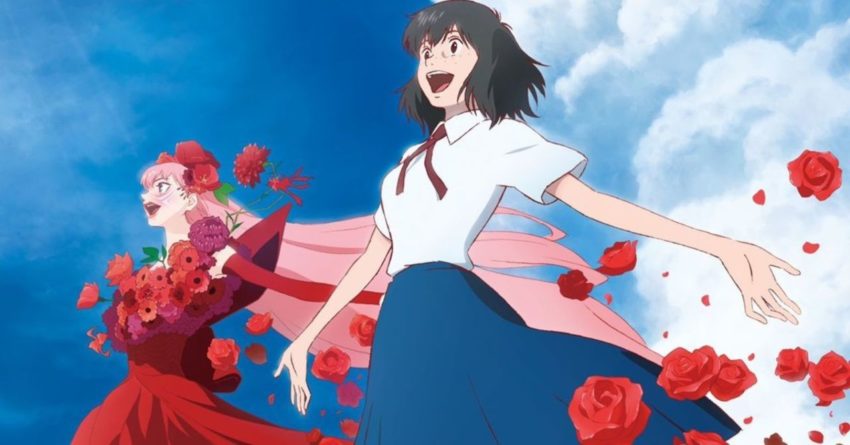
Mamoru Hosoda’s latest film mines contemporary issues for its storyline, touching on social anxiety, online identity, cancel culture and the fragility of Internet fame. Its leading lady is Suzu, a shy teenager who finds a new outlet for her desires and ambitions by signing up to the virtual reality service “U”, an online avatar platform with millions of members worldwide, realised in the same sort of glorious super-abundance Hosoda brought to bear on his earlier Summer Wars.
Suzu has a high time of it in U, becoming an internet sensation under her net-handle “Belle” – deriving from the English translation of her Japanese name, which means “bell”, but also evoking the French word for beauty. She surfs the net on the back of a blue whale festooned with amps, performing songs of her own composition and attracting a worldwide online fandom as a pop star. Her online avatar is, supposedly, nothing like her wallflower self, but U sees people differently, arguably making their online appearances more accurate depictions of their inner souls. Beauty might be skin-deep, but in U, true beauty (and true ugliness) ring out.
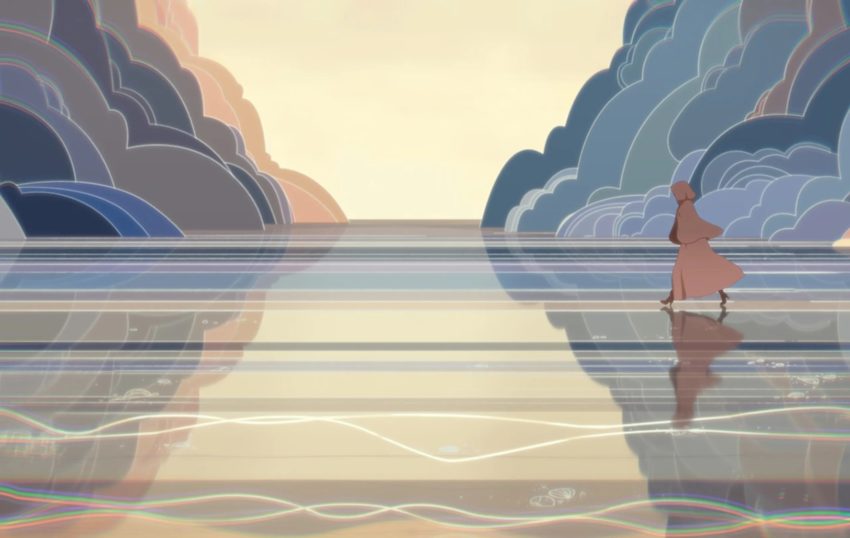
American audiences, for whom the mere drop of a hat often seems to be an invitation to leap to their feet in hooting admiration, may be wrong-footed by the very idea of a standing ovation being something unique. Among the less demonstrative theatre and cinema audiences of Europe, they are far rarer, and only reserved for moments of supreme artistic appreciation – I can count on one hand the number of times in my life I have got to my feet applauding in an auditorium. There is, it seems, one notable exception, and that’s the Cannes Film Festival, where standing ovations are the norm. The crucial issue is how long they take – it seems there is literally a Frenchman standing on the side-lines with a stopwatch, determined to record the precise level of Gaulish approbation.
So, what does it actually mean when Mamoru Hosoda’s Belle received a 14-minute ovation at Cannes this summer? It means, presumably, that French audiences rated it much higher than Moonrise Kingdom (2012, 5 minutes), and more than Twin Peaks (2017, 5 minutes). It means that, by some odd metric of hands smacking together, it was worth more than Once Upon a Time in Hollywood (2019, 7 minutes), better in some way than BlackkKlansman (2018, 10 minutes), and a smidgen more entertaining than Bowling for Columbine (2002, 13 minutes). In other words, when media around the world reported that Belle had the French audience calling bravo on their feet for a solid 840 seconds, it amounted to a very respectable win among the festival-goers of that particular premiere. Although if you’re wondering, and I am sure you are, it is still a way away from the current record-holder, Pan’s Labyrinth (2006, 22 minutes).
But there is plenty to recommend Belle for French audiences, not the least its heavy influence from a tale that, while known to audiences and animators alike for its Disney incarnation, is nevertheless a French story. While the film is known in its native Japanese as The Dragon and the Freckled Princess, its international title Belle reflects both its heroine’s alias and La Belle et la Bête – Beauty and the Beast. Of the two dozen or so media adaptations of this old fairy tale, one might expect Hosoda to lean on the iconic Jean Cocteau movie from 1946, but he remains an animator at heart, playfully retelling, reimagining and disrupting the narrative of the Disney “original”, with repeated homages and pastiches. Nor is this the first time that Hosoda’s work has confronted the stand-off between transcendent humanity and our baser natures – his 2015 The Boy and the Beast similarly tipped its hat to the story first published in 1740 by Gabriel-Suzanne Barbot de Villeneuve.
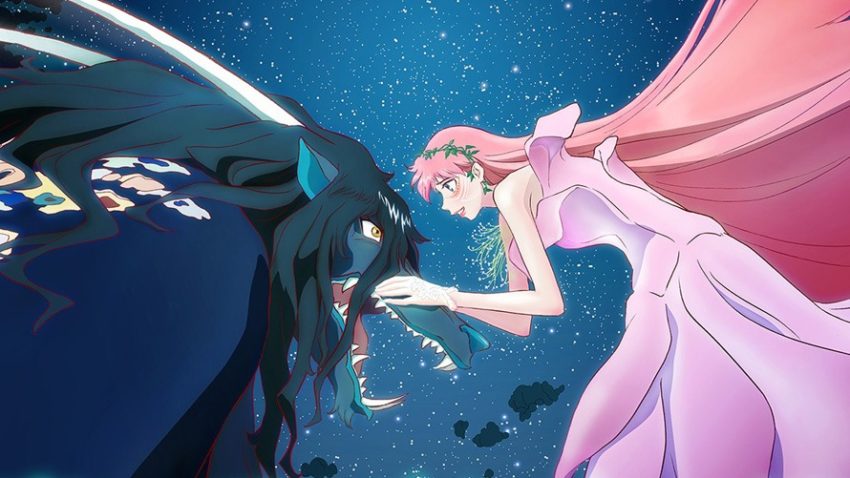
Hosoda’s “Beast” is the Dragon, the net handle for an online bad-boy, a troubled, wounded monster who disrupts one of Belle’s sold-out online concerts, hounded by self-appointed vigilantes. In a playful dig at our era’s obsessions with super-heroes, the “Justices” are a bunch of white-clad do-gooders, led by a heroic numpty called Justin, utterly convinced that they are on the side of right, and blissfully unaware that many of the kids in the crowd are cheering on the criminal. Justin, we may presume, might be a garbled reference to Gaston from the Disney cartoon…. But then again, it might be a knowing nod to Justin Bieber, whose “Beauty and a Beat” (2012) similarly married fairy tales to music.
As a halting romance begins to blossom between Belle and the Dragon, it’s Justin (the character, not Bieber) who threatens to overturn their reverie, wielding a green “ring of truth” that has the power to expose both of their offline identities and ban them forever from their Internet paradise.
Behind the scenes, the cast is a who’s-who of names with resonances outside the film. The leading lady is voiced by Kaho Nakamura, herself a young singer-songwriter of many years standing. The Dragon is voiced by Takeru Sato, most recognisable as the live-action face of Kenshin Himura in the Rurouni Kenshin movies. The supporting cast is riddled with other contemporary celebrities, including Lilas Ikuta, one half of the Internet music sensation Yoasobi, and Japanese megastar Koji Yakusho, who previously appeared in Hosoda anime as Kumatetsu in The Boy and the Beast and the grandfather in Mirai, now playing Suzu’s widowed father. Her mother, whose death continues to haunt Suzu in flashback, is played by Sumi Shimamoto, who was once the voice of anime’s favourite heroine in Nausicaa of the Valley of the Wind.
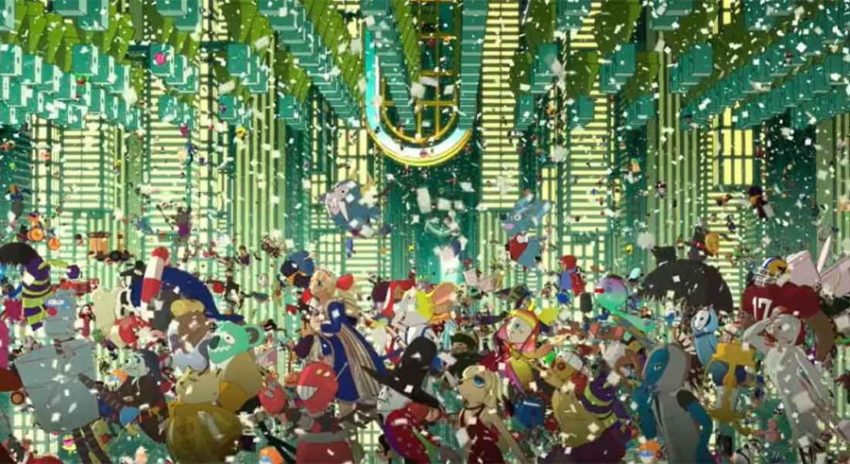
Belle also follows Hosoda’s recurring template of drawing on his own life. Just as Summer Wars was inspired by meeting his future wife’s huge extended family, Wolf Children began life as the anxieties of a new father, and the foundations of Mirai were constructed from his observation of his son’s reaction to a new sibling, Belle continues the Hosoda family chronicle. Not the least, it revolves around a child’s grief for a departed parent – Hosoda’s own mother died shortly before he completed Summer Wars, after a long illness that lasted for eight years. Her shadow loomed over his next film, Wolf Children, and indeed over Mirai, which examined the degree to which a child could relate to a dead grandparent. Belle, too, obsesses over a lost mother, but also over the opportunities of a digital age.
“My daughter is five years old,” Hosoda told Tarik Khaldi on the Cannes website. “I thought a lot about her future while making this film. When I was born, the digital world was nothing like it is today. I imagined what it would be like when my daughter and her generation, who were born with the internet, are grown up.”
Although, of course, this is not the first time that Hosoda has approached the Internet as a topic, a subject that he has returned to on several occasions since his often-overlooked work-for-hire Digimon Adventure: Our War Game in 2000. Hosoda regards himself as possibly the “only director” to consistently investigate the Internet not as some dreadful disaster befalling humanity, but as a wondrous invention with the tool to change the world, not merely for his generation, but for his daughter’s. “They have grown up with the net,” he observed to the Japan Times, “yet are constantly told how malevolent and dangerous it is. Human relations can be complex and extremely painful for young people. I wanted to show that this virtual world, which can be hard and horrible, can also be positive.”
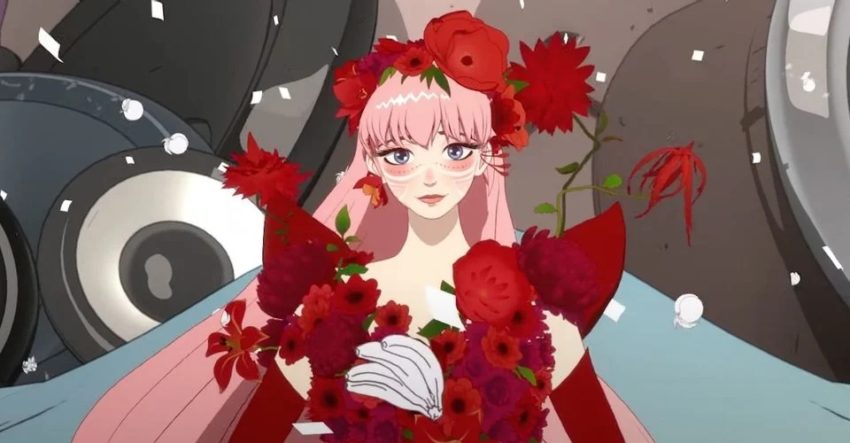
In doing so, he makes a strong case for his heroine and her acid-tongued hacker bestie as realistic teenagers, rather than the idealised, trope-riddled clichés of many another film. This, again, is something that seems to derive from his personal experiences. Back in 2018, at jury deliberations over Hosoda’s earlier Mirai for Scotland Loves Anime, Almar Haflidason, himself a father, argued that the specificity and value of the film was something that only parents would really appreciate, and that the turbulent nature of toddlerdom and the experience of being an “outnumbered” parent, were all beautifully observed, as was the simple animation of a toddler’s movements, and the naturalistic depiction of a toddler’s bloody-minded nature. He found it to be remarkably accurate and wished he could thank Hosoda for his study of the minutiae of an element of human experience that is rarely depicted on film.
Something similar, it seems, has come out in the critical discourse over Belle, for which Hosoda expressed his frustrations at the way in which female characters were so often portrayed onscreen. “You only have to watch Japanese animation to see how young women are underestimated and not taken seriously in Japanese society,” he said to the Japan Times. “It really annoys me to see how young women are often seen in Japanese animation — treated as sacred — which has nothing to do with the reality of who they are.”
Controversially, Hosoda went even further, reigniting old tensions within the anime business. “I will not name him, but there is a great master of animation who always takes a young woman as his heroine. And to be frank I think he does it because he does not have confidence in himself as a man. This veneration of young women really disturbs me and I do not want to be part of it.”
Hosoda’s statement ignited a predictably polarised Twitter storm. Many online pundits regarded it as a low blow aimed at Hayao Miyazaki, the retired (sorry, almost retired) director whose heroines were once paragons of female gumption, but were now apparently found wanting in a woker world. Others noted that Hosoda’s apparent anti-Miyazaki rant might have had more to do with the way in which Miyazaki’s legacy is being managed by his studio. Infamously in the late 1980s, the freshly graduated Hosoda made it to the final selection for the Studio Ghibli training scheme, only to fall at the final hurdle. He was one of only two applicants to receive a personal rejection letter from Miyazaki himself, in which the director noted that hiring Hosoda at Ghibli would only restrict his creative talents, and that he should go his own way. Instead, Hosoda took a job at Toei in 1991, and toiled through the decade on a series of well-known franchises.
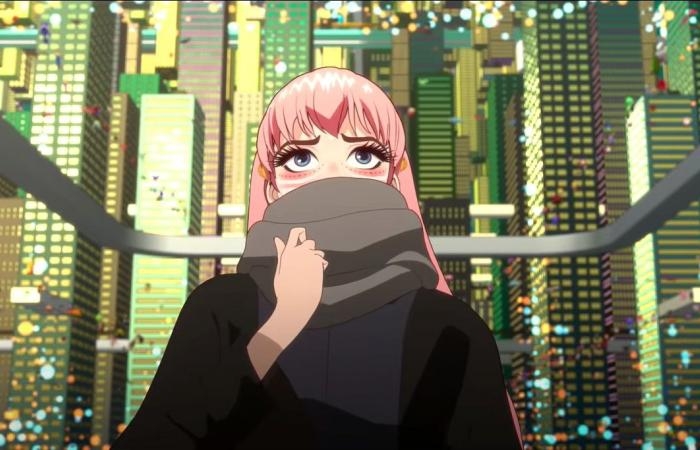
Some years later, in August 2000, as a young director with a growing number of credits, Hosoda was lured back to Ghibli by the presumably sheepish producer Toshio Suzuki to direct Howl’s Moving Castle, grooming him to all intents and purposes as the successor to Miyazaki. But he soon left after “creative differences”, complaining later that the studio didn’t want a successor, but a clone.
“I was told to make [Howl] similar to how Miyazaki would have made it, but I wanted to make my own film the way I wanted to make it,” he said, investing Miyazaki’s rejection letter of 20 years earlier with a prophetic accuracy. “The difference between the film I wanted to do and how they wanted to do it was too great, so I had to get off the project.” His harsh words this year might be better regarded in this context, less as an attack on Miyazaki than on an anime industry that has spent the last decade vainly trying to emulate him.
Instead, Hosoda endured a few more works for hire, before striking gold with his adaptation of Yasutaka Tsutsui’s much-loved sci-fi classic, The Girl Who Leapt Through Time (2006). Pointedly, he won over the original audience, and many critics, by his decision to rewrite the heroine for a new era. The protagonist of the original was something of a drippy swot, a rather dull, unassuming girl conceived as a teacher’s idea of the ideal pupil in a story serialised in a magazine for schools. But Hosoda’s heroine is a grittier, flawed tomboy who initially uses her newly found time-travelling powers for bunking off.
As with both Summer Wars and The Boy and the Beast, the other world that the characters visit in Belle is soon found to have implications in reality, bringing Suzu and her allies back to Earth with a bump for a final act that deals with real-world problems. It also engages viscerally and dynamically with the underlying themes of Disney’s Beauty and the Beast – beauty might indeed be only skin-deep, but Hosoda’s understanding of the story delves far beyond, into an interrogation of whether “romantic” love should always be the question and the answer in the stories we tell ourselves. Belle is ultimately not a film about romantic love at all, but in finding grace, forgiveness and compassion for others.
Jonathan Clements is the author of Anime: A History. Belle is screening in UK cinemas from 4th February.
Ben
October 11, 2021 5:29 pm
Really don't like how you dismiss Hosoda's output at Toei as just "for-hire" work that he had to "toil" and "endure". I can only assume you haven't actually watched his episodes of One Piece, Ojamajo Doremi, Digimon and Ashita no Nadja or his One Piece and Digimon movies, because I can't imagine anyone watching them and coming to that conclusion. They are some of the most inventive and beautifully directed anime of that era and the quality of his work at Toei was largely what got him that Ghibli invitation in the first place. Watching those episodes and movies now, it's very obvious how much love and passion he put into them, especially knowing how many ideas from them he would reuse in his later works.
Jonathan Clements
October 12, 2021 3:18 am
You're right -- after Hosoda failed in his first-choice placement at a film studio, he did indeed work on a bunch of TV shows that might be better described as "well-known", so I have now changed that in the article. Particularly among the granular and incisive community of sakuga aficionados, it would come as a surprise to literally nobody that someone who would be in the running one day for an Academy Award might produce high-quality and interesting work while working in TV, although Hosoda himself used pseudonyms for his work on Spiral: The Bonds of Reasoning, Voogie's Angel, Alice SOS, and I'm Gonna Be an Angel -- as well as Samurai Champloo, which I wish more people remembered. He also used pseudonyms and/or was uncredited for his work on Utena and Rurou ni Kenshin, so while those are certainly not "forgettable", he did his best for his own involvement with them to be forgotten. I made no comment on the quality of Hosoda's work while he worked in TV. "Work-for-hire" is a not a slur, it's a legal definition relating to the degree by which creatives may expect to profit long-term from their labour, but yes, in an article about a film for a film festival, I made movies sound like a step up. TV is hard work, which is one of the reasons why so many creatives are glad to leave it behind when they get the chance, Hosoda and Miyazaki among them.
Evan
October 18, 2021 1:39 am
I totally disagree with your assessment here. Rurouni Kenshin and Utena were both formative works for Hosoda and he cites Kazuhiro Furuhashi and Kunihiko Ikuhara as major influences. In particular, on Utena, he was extremely dedicated to the character Juri and storyboarded many of her episodes and even asked Ikuhara for permission to rewrite the script for episode 29 because he didn't think the original script fit Juri's character. In addition, Hosoda wrote detailed instructions to make sure his storyboards weren't misunderstood by the episode directors and also animated some scenes himself to ensure the quality of his episodes. The reason Hosoda used pseudonyms while working on these shows isn't because he wants his involvement with them to be forgotten (as you suggest) but because directors belonging to Toei are contractually forbidden from taking on work at other studios. When Hosoda initially joined Toei as an animator, his contract was different and he was allowed to do some external work (in this case, Yuu Yuu Hakusho: The Movie - Poltergeist Report and Eto Rangers) but once he transferred to the company's directing department circa 1996 and began working on Gegege no Kitarou (1996) as an assistant director, his contract changed and external work became forbidden. Toei directors moonlighting under fake names isn't uncommon either, many other well-known directors like Jun'ichi Sato, Hiroyuki Kakudo, Takuya Igarashi, and Tatsuya Nagamine have also done it. I don't believe Hosoda is ashamed of his work on Alice SOS or Spiral either since those OPs were done as favours to his close friend Shingo Kaneko (another Ikuhara disciple and a fantastic director in his own right, as well as the one who invited Hosoda to work on Eto Rangers all those years back). In particular, the credits for Alice SOS's OP weren't even shown on TV since NHK, the broadcasting company, used to have a policy not to credit the OP/ED staff. In fact, we only know that Hosoda directed the OP because of a magazine feature from 2007. My point being that, if Hosoda didn't want us to know of his involvement with that show, we wouldn't. His storyboards for Tenshi ni Narumon! were similarly done as a favour for Hiroshi Nishikiori whose work on Utena was highly praised by Hosoda. Thanks for hearing me out and have a nice day. I hope this reply doesn't come off as too "granular".
Jonathan Clements
October 18, 2021 9:59 am
Evan, I would say that answer was totally the right level of granular -- very interesting insights. jc
Francesco Nicoletti
October 18, 2021 9:34 am
Well if Oshii’s opinion is anything to go by , not always.. Porco Rosso-- In short, it's a personal novel (shi shyousetsu).[3] He (Miya-san as Porco?) put on such airs and spoke such flashy lines, posing as a pirate, but that's all self-excusing. I think it would have been good if the ending was such that he took off the pig's head, and Miya-san's face showed up underneath it, (saying) "I'm sorry." I think it would have been a fine film if the hero was a pig who could only say "Oink Oink," but he was very good at air battles. From The Animation of Hayao Miyazaki, Isao Takahata and Studio Ghibli Kinema Junpo Special Issue, Number 1166; July 16th, 1995 Copied from Hayao Miyazaki Web